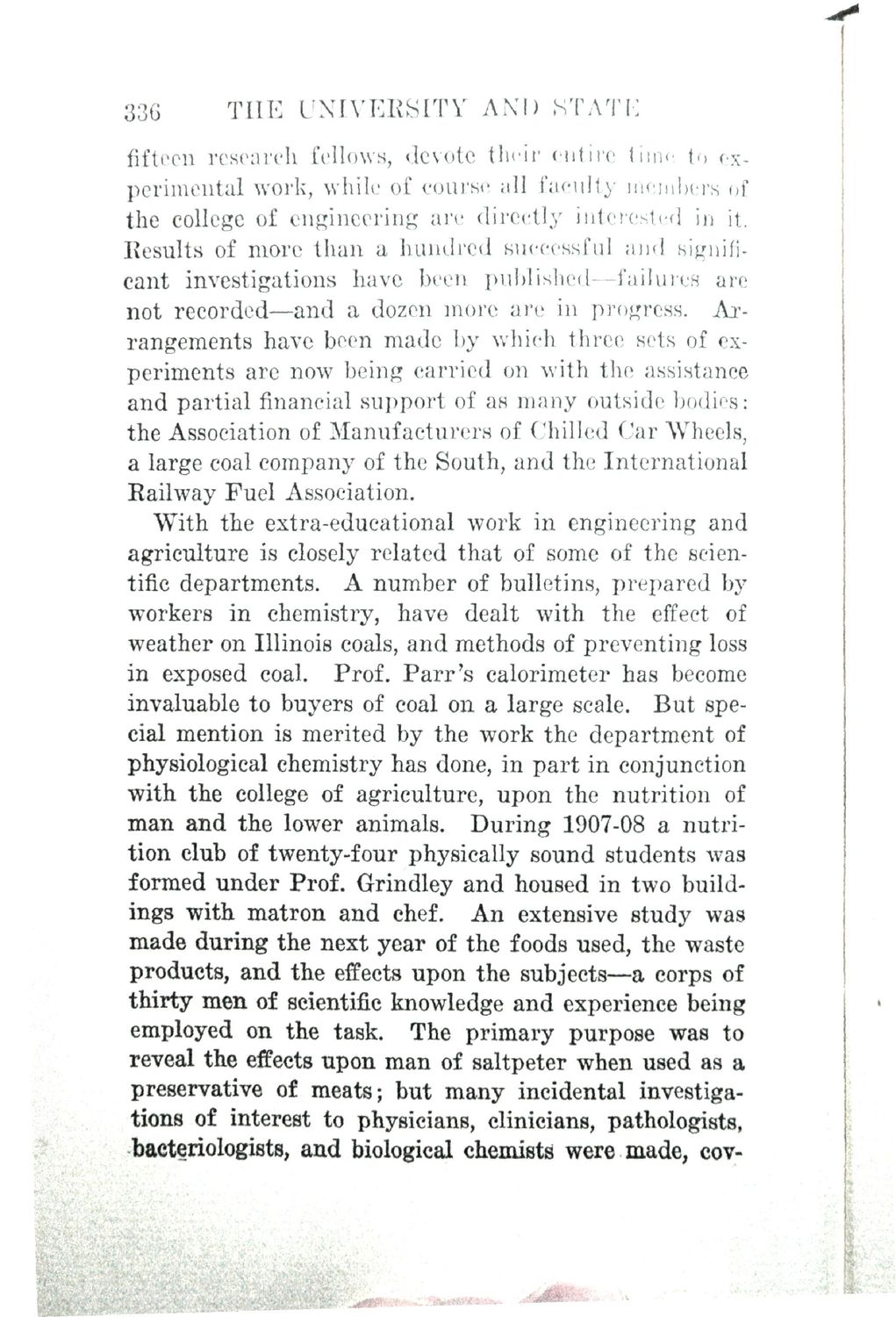| |
| |
Caption: Book - History of the University (Nevins)
This is a reduced-resolution page image for fast online browsing.

EXTRACTED TEXT FROM PAGE:
336 THE UNIVERSITY AND STATE fifteen research fellows, devote their entire time to experimental work, while of course all faculty members of the college of engineering are directly interested in it. Results of more than a hundred successful and significant investigations have been published—failures are not recorded—and a dozen more are in progress. Arrangements have been made by which three sets of experiments are now being carried on with the assistance and partialfinancialsupport of as many outside bodies: the Association of Manufacturers of Chilled Car Wheels, a large coal company of the South, and the International Railway Fuel Association, j With the extra-educational work in engineering and agriculture is closely related that of some of the scientific departments. A number of bulletins, prepared by workers in chemistry, have dealt with the effect of weather on Illinois coals, and methods of preventing loss in exposed coal. Prof. Parr's calorimeter has become invaluable to buyers of coal on a large scale. But special mention is merited by the work the department of physiological chemistry has done, in part in conjunction with the college of agriculture, upon the nutrition of man and the lower animals. During 1907-08 a nutrition club of twenty-four physically sound students was formed under Prof. Grindley and housed in twojtmildings with matron and chef. An extensive study was made during the next year of the foods used, the waste products, and the effects upon the subjects—a corps of thirty men of scientific knowledge and experience being employed on the task. The primary purpose was to reveal the effects upon man of saltpeter when used as a preservative of meats; but many incidental investigations of interest to physicians, clinicians, pathologists, bacteriologists, and biological chemists were made, cov-
| |